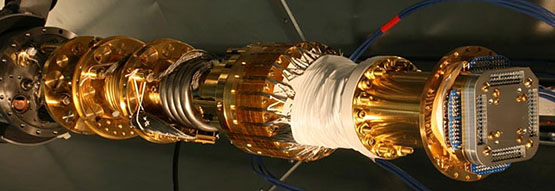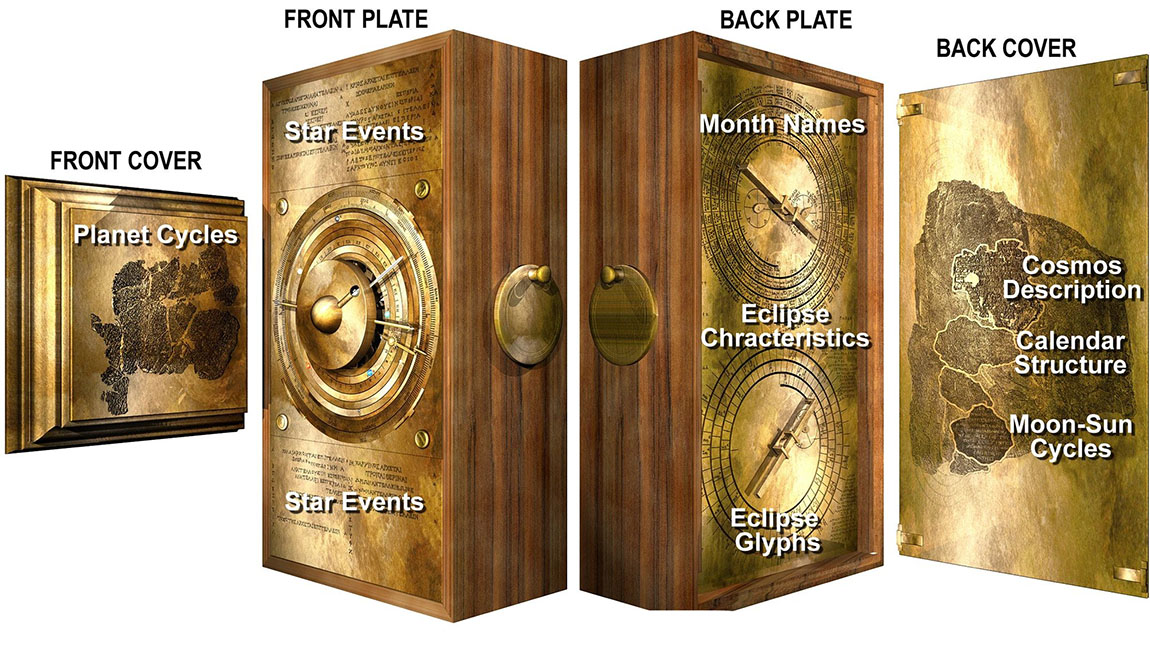
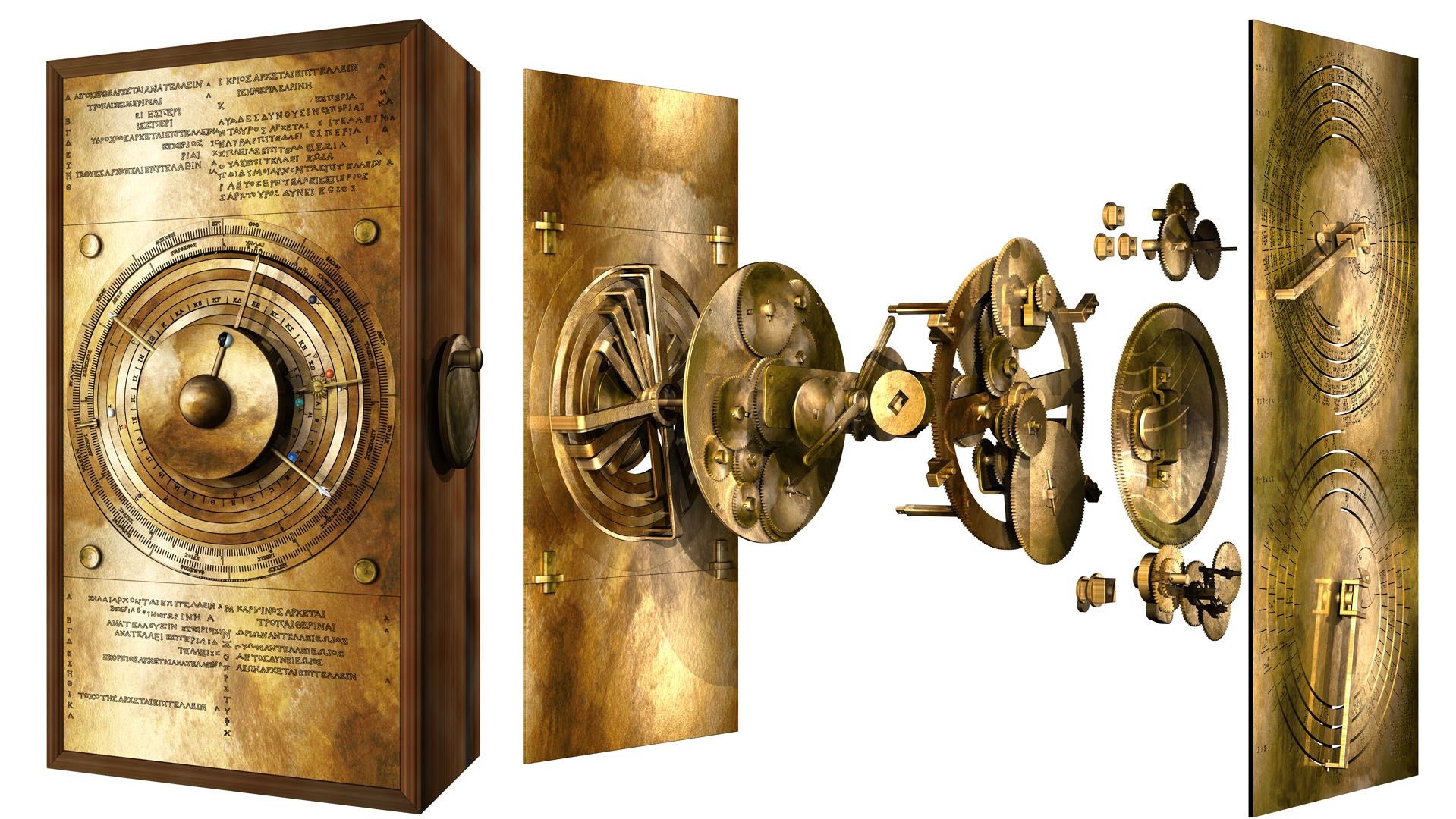
The world's 1st computer more than 2000 years old
Quantum Computing
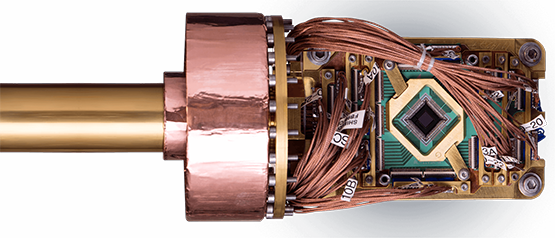
Quantum Chip-board
Quantum Computing, a breakthrough technology
The theory behind quantum computing was first laid out in the 1980s. It took 2 generations for the practice to catch up with theory, enabling the construction of the first quantum computers. Companies like D-Wave Systems are developing their own technologies anticipating diverse applications for the awesome computational power that can be derived from quanta, the fundamental building blocks of matter.
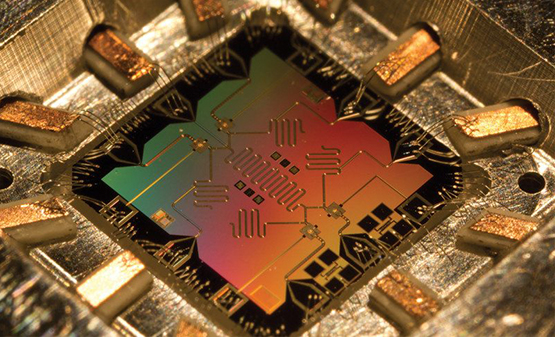
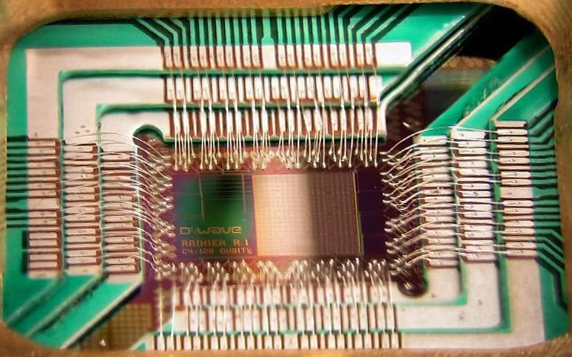
D-wave's 128 qubit superconducting
adiabatic quantum optimization processor
The basic laws of physics fall into two categories: atomic physics that deals with the visible interaction between clusters of atoms, and quantum physics that deals with the invisible interactions between sub-atomic particles. Some laws apply only to one category; some belong to both.
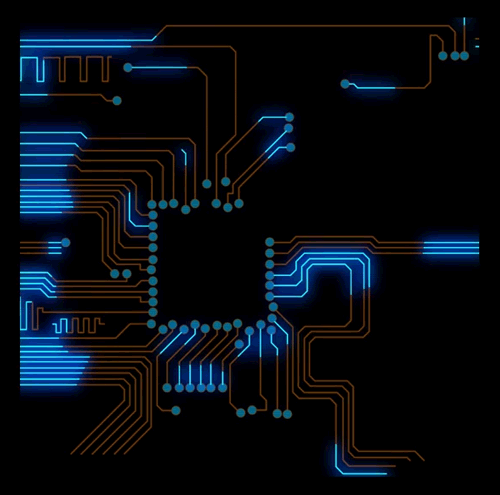
Today’s processors are made up of billions of transistors a few nanometers in size, packed into a very small space. The linear processing power of each single chip has reached its limit. We are also quickly approaching the maximum possible number of chips/mm³, whereby the theoretically minimum transistor size is a single atom with a single electron, which is the basic information unit called bit, operating between two opposing states of either 0 or 1. That is our current binary computer.
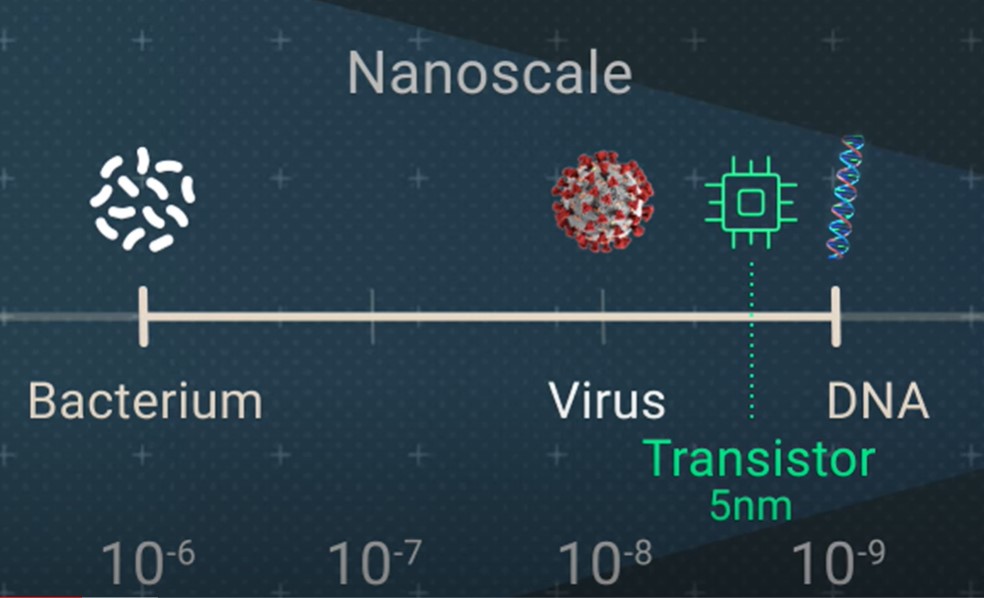
The solution for more power
The Scientific Research Institute of Experimental Physics in Sarov, Russia, developed a unique optical computer that is at least 10,000 x faster than any super-computer, and using only 100 W in a space that is a tiny fraction of a supercomputer. This optical computer is divided into electric and photonic sections, with machine code translated into laser pulses. Photons then pass into a photonic processor, where laser pulses interact, allowing for logic operations like the ones in traditional computers to be carried out. After that, laser beams leave the processor and return to the computer's electric portion, where optical information is converted back into electric-based information, becoming accessible to the user.
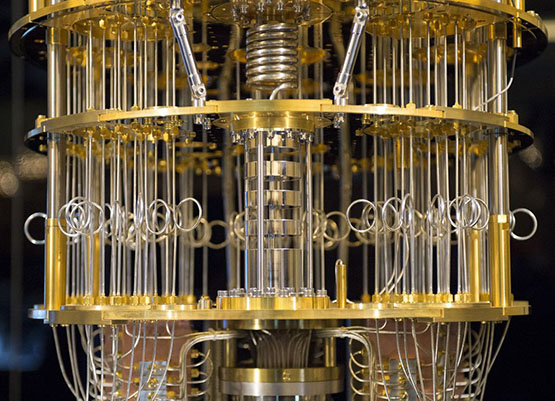
IBM Quantum Computer 41-1
the QC, Quantum Computer.
In quantum computing, it is possible to use intermediate, non-binary states that liberate us from the bondage of either 0 or 1. Their basic information units, called qubit (or quantum bit), can assume the values of 0 and 1 simultaneously, plus they can assume an infinite number of states in between 0 and 1, called superpositions, where these qubits interact delicately with each other, called quantum entanglement.
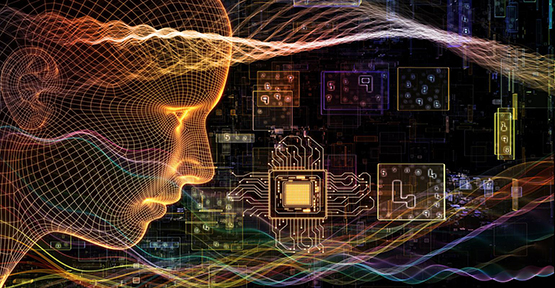
Only when the value of a qubit is focused on by the energy beam of our attention, does it ever assume one of the two basic states 0 or 1. The big kicker is that a qubit remaining in superposition can perform multiple processing tasks at once, because of the fundamental laws of quantum physics.

A diagram of a superconducting qubit.
Magnetic spin states encode bits of information as +1 and -1 values,
and can also be placed into quantum mechanical superposition.
Physically, a qubit can be represented by any quantum set of two different basic states: two energy levels in an atom, or two levels of photon polarization, vertical or horizontal. While one bit in your computer holds one of two values (0-1 or 1-0), and two bits hold one of four values, etc., two qubits hold four values at any given time, whereby 16 qubits may hold (4) 16x16x16x16 = 65536 values simultaneously.
The number of possibilities doubles for every qubit added, allowing a quantum machine to process far more data than a binary computer can, in an incredibly short time. In theory, this difference in capacity can amount to an astounding 1:18 000 000 000 000 000 000 (Quintillion) times!
Global public and private debt has hit all-time high in 2019 of $184,000,000,000,000 (184 Trillion), according to the GDD (Global Debt Database).
Such a computer could quickly sift through and recognize objects in a giant collection of photographs. It would be perfect for big number processing, encryption and code breaking. Or, blockchain breaking.

QC: The kiss of death for cryptocurrencies?
Once quantum computers rise and spread, they could be used to crack the cryptographic protections responsible for the operating model and security of blockchain technology, the technology on which cryptocurrencies are based. As of 1/1/2018, cryptocurrencies were collectively worth about U$ 700 Billion. This certainly makes them worth fighting for.
What makes blockchain technology vulnerable
to the threat of quantum computers?
Blockchain architecture is protected by two types of security keys: private and public. To make a cryptocurrency transaction, the buyer shares a public key with its seller, while the latter uses a private key to acknowledge receipt. Should anyone other than the seller or buyer acquire the private key, they would gain control of the transaction.
The private key can either be stolen or broken by the brute force of enormous computational power. The emergence and spread of quantum computers will render the blockchain technology’s algorithms useless. A holder of a quantum computer will be able to calculate the private key using the public key. This ability will give the code holder unfettered access to all the world’s cryptocurrency wallets.
However, even though it can crack a private key in minutes, the cost of a quantum computer will make that a very expensive crack. But $700 billion is a powerful incentive.
The easiest way to secure keys in the face of quantum computing would be to have the cryptocurrency community adopt a more sophisticated set of cryptographic standards. The technology to do so is out there.
However, any modifications require the consent of the entire cryptocurrency community, with separate consents for each cryptocurrency. An attempt to get all users to agree to a volume increase of bitcoin blocks from 2MB to 4MB has failed miserably. A consensus for upping security standards may prove equally elusive, as the blockchain protocol requires 80% of currency users to approve any change.
By the time quantum computers become widely available, the cryptocurrency community may well recognize the threat and begin to see eye to eye on updating cryptographic standards. That will keep blockchain and cryptocurrency technology secure from quantum computers well into the future. At the same time, the technique known as Quantum Key Distribution (QKD) provides both protection against the threat posed by quantum computation and a much higher security level for any exchange of data.
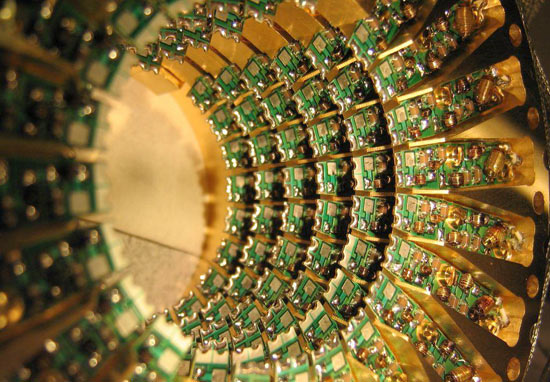
Quantum Computer (QC) Funnel
QC is ultra-super fast but not unlimited
A quantum computer requires a control-operating system, algorithms to make quantum calculations, and proper calculation software.
The development of quantum algorithms is very difficult as they need to rely on the principles of quantum mechanics. The algorithms for QC's rely on the rules of probability. If the same algorithm is run on a quantum computer twice, the results can be completely different, as the process itself is randomized. Thus, for a reliable calculation on a QC, one must factor in the laws of probability. A very complex process!
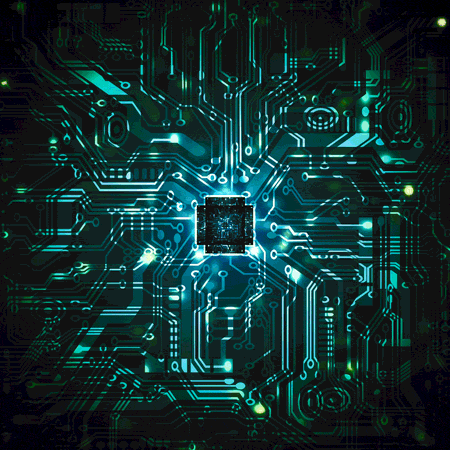
Scaling Quantum Computers to a useful size is difficult because of quantum decoherence, the unwanted, 'noisy', interactions with the environment, causing QC's to function as a binary computer. QC's are suited for very big, specialized, and specific calculations as well as algorithms that help harness all their powers. A very expensive affair. Probably QC's are not going to be a simple office or household item.
However, regardless of how much time is needed to generate a given result by means of an algorithm, we can already imagine a situation in which a QC, and only a QC, could solve the problems that mankind desperately need to solve. (author: Norbert-Biedrzycki).
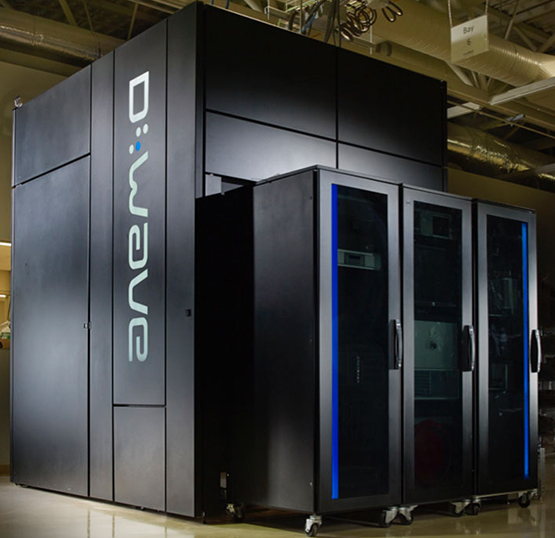
Quantum Simulations
One of the most important needs for a quantum computer is the need to model (sub)molecular interactions. Binary computers cannot do that.
This R&D is using a combination of AI + Self-Learning:
instead of using electrons, 18 optical quantum bits are entangled,
leading to a method of multi-degrees of freedom photon control,
which will lead to a chip with much higher quantum processing speeds.
Molecular simulations will allow us the get a more accurate view and understanding of the interactions between the (sub)atomic particles of our 3D physical world, and how to apply that knowledge gained to new and better types of medicine and AI. "However what effect does a photon have on its environment when passing through? Will Privacy become the new luxury?"
